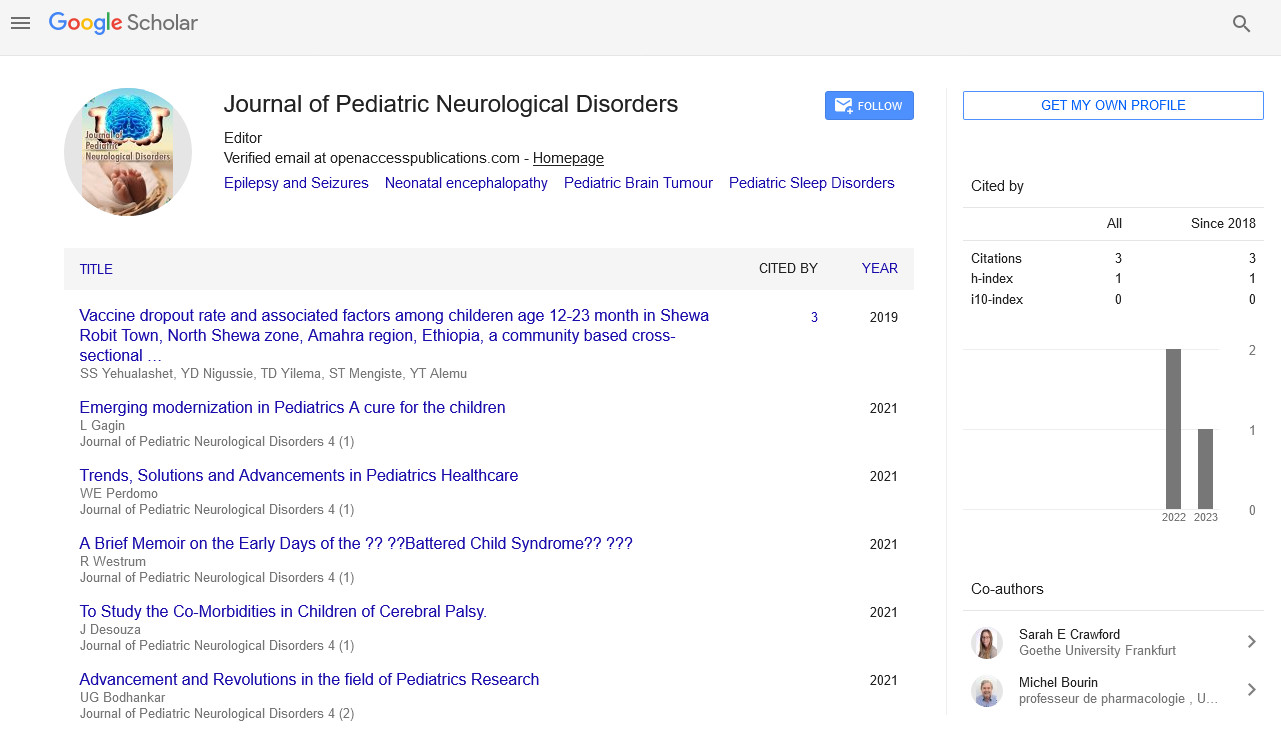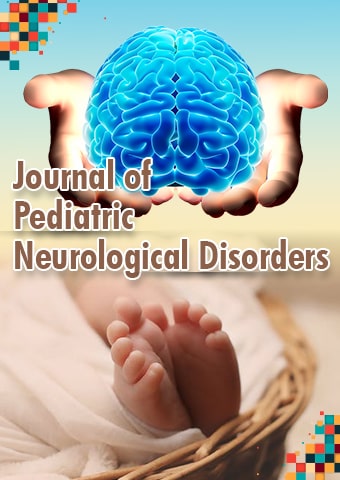Short Article - Journal of Pediatric Neurological Disorders (2020) Volume 3, Issue 2
Alzheimer's disease--A spirochetosis, Neuro report 1993
Judith
Journalist, Switzerland
Abstract
Alzheimer’s Disease is characterized by a slow, progressive decline of cortical functions particularly cognition and memory. The disease is associated with the formation of plaques in the brain, the main component of which is a peptide called beta-amyloid. Molecular and biochemical studies have shown that an excess of beta-amyloid is the primary event in Alzheimer’s Disease - but to date its source has not been established. This report by Judith Miklossy, from the University Institute of Pathology, Switzerland suggests that spirochaetal bacteria may be the source of this peptide. Perhaps the most important implication of a spirochaetal cause of Alzheimer’s Disease is that, because of the long latent stage of the spirochaetal diseases (the time between the primary infection and the development of dementia, which may be as long as 43 years), the screening by diagnostic tests and the treatment of the younger population may prevent Alzheimer’s Disease. The research has been fully perreviewed prior to acceptance for publication in this journal.
In an accompanying editorial the significance of the article is discussed. The authors comment that “If the current findings are confirmed in other laboratories, this would certainly rank among the most significant contributions in the history of medicine…”Chronic spirochetal infection can cause slowly progressive dementia, cortical atrophy and amyloid deposition in the atrophic form of general paresis. There is a significant association between Alzheimer disease (AD) and various types of spirochete (including the periodontal pathogen Treponemas and Borrelia burgdorferi), and other pathogens such as Chlamydophyla pneumoniae and herpes simplex virus type-1 (HSV-1). Exposure of mammalian neuronal and glial cells and organotypic cultures to spirochetes reproduces the biological and pathological hallmarks of AD. Senile plaque-like beta amyloid (Aβ) deposits are also observed in mice following inhalation of C. pneumoniae in vivo, and Aβ accumulation and phosphorylation of tau is induced in neurons by HSV-1 in vitro and in vivo. Specific bacterial ligands, and bacterial and viral DNA and RNA all increase the expression of pro-inflammatory molecules, which activates the innate and adaptive immune systems. Evasion of pathogens from destruction by the host immune reactions leads to persistent infection, chronic inflammation, neuronal destruction and Aβ deposition. Aβ has been shown to be a poreforming antimicrobial peptide, indicating that Aβ accumulation might be a response to infection. Global attention and action is needed to support this emerging field of research because dementia might be prevented by combined antibiotic, antiviral and anti-inflammatory therapy.
Following previous observations a statistically significant association between various types of spirochetes and Alzheimer’s disease (AD) fulfilled Hill’s criteria in favor of a causal relationship. If spirochetal infections can indeed cause AD, the pathological and biological hallmarks of AD should also occur in syphilitic dementia. To answer this question, observations and illustrations on the detection of spirochetes in the atrophic form of general paresis, which is known to be associated with slowly progressive dementia, were reviewed and compared with the characteristic pathology of AD. Historic observations and illustrations published in the first half of the 20th Century indeed confirm that the pathological hallmarks, which define AD, are also present in syphilitic dementia. Cortical spirochetal colonies are made up by innumerable
tightly spiraled Treponema pallidum spirochetes, which are morphologically indistinguishable from senile plaques, using conventional light microscopy. Local brain amyloidosis also occurs in general paresis and, as in AD, corresponds to amyloid beta. These historic observations enable us to conclude that chronic spirochetal infections can cause dementia and reproduce the defining hallmarks of AD. They represent further evidence in support a causal relationship between various spirochetal infections and AD. They also indicate that local invasion of the brain by these helically shaped bacteria reproduce the filamentous pathology characteristic of AD. Chronic infection by spirochetes, and co-infection with other bacteria and viruses should be included in our current view on the etiology of AD.
Prompt action is needed as AD might be prevented. Initial hypothesis
The hypothesis that various types of spirochetes might be involved in Alzheimer's disease was born when we had the opportunity to analyze the brain of a patient in 1987 suffering from meningo vascular Lyme neuroborreliosis. In order to detect spirochetes, brain tissue of a patient with clinically and pathologically confirmed syphilitic dementia was used as positive control. Surprisingly, silver impregnation techniques for the detection of spirochetes showed innumerable spirochetes in the cerebral cortex forming masses or balls, identical to senile plaques. Individual spirochetes disseminated in the cerebral cortex were identical to curly fibers. Neurofibrillary tangles and beta-amyloid deposition were also resent. When seen at high magnification the plaques were made up by spirochetes. Following this observation we expected that various types of spirochetes, e.g. various Borrelia and Treponema spirochetes including Borrelia burgdorferi, periodontal pathogen spirochetes, intestinal and urogenital spirochetes in a similar way to Treponemapallidum, may cause dementia and reproduce the pathological and biological hallmarks of Alzheimer's disease. Based on this observation a research was undertaken, using neutral techniques to detect all types of spirochetes in order to answer the question, whether various types of spirochetes are involved in Alzheimer's disease, whether Alzheimer's disease might be a neurospirochetosis Our first results were published in 1993 in NeuroReport Miklossy J. Alzheimer's disease-a spirochetosis? Neuroreport. 1993 Jul;4(7):841-8.
The aetiology of Alzheimer's disease (AD), which affects a large proportion of the aged population, is unknown and the treatment unresolved. The role of beta amyloid protein (beta A4), derived from a larger amyloid precursor protein (APP) in AD is the subject of intense research. Here I report observations that in 14 autopsy cases with histopathologically confirmed AD, spirochetes were found in blood and cerebrospinal fluid and, moreover, could be isolated from brain tissue. Thirteen age-matched control cases were without spirochetes. Reference strains of spirochetes and those isolated from brains of AD patients, showed positive immunoreaction with monoclonal antibody against the beta amyloid precursor protein. These observations suggest that spirochetes may be one of the causes of AD and that they may be the source of the beta amyloid deposited in the AD brain.
A press release and an editorial comment accompanied this initial article

